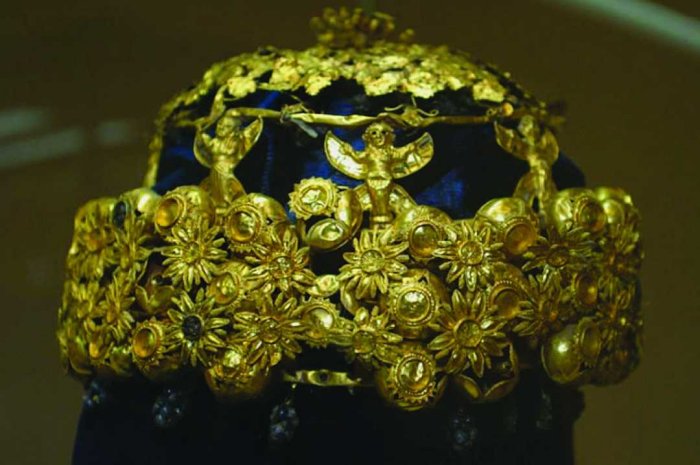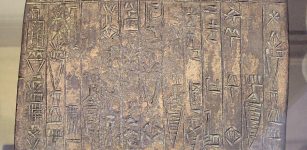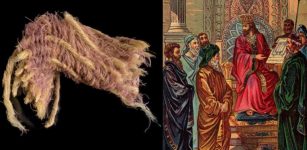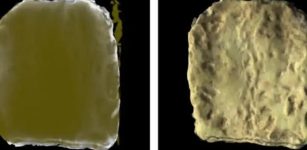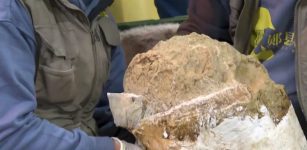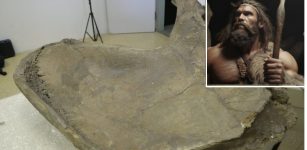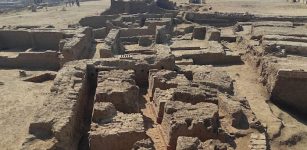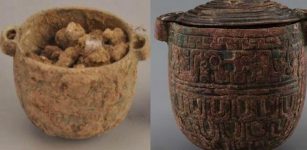Long-Lost Mesopotamian Queen Hama Discovered By Student Just By Reading Books
Conny Waters - AncientPages.com - If you are looking for a long-lost ancient queen, this discovery shows there is no need to go far. You can find one just by reading books!
The jeweled gold crown found on Hama's head depicts pomegranates, grapes, leaves, flowers and female genies.
Sgt Noreen L. Feeney,, 318th Public Affairs Operation Center (PAOC), US Army
Tracy L. Spurrier, a PhD candidate in the Department of Near and Middle Eastern Civilizations at the University of Toronto has accomplished what many dream of. Just by using books, she has been able to identify Queen Hama, who lived about 3,000 years ago in the capital of Nimrud, Assyria.
About 30 years ago, archaeologists discovered there an ancient tomb that contained extraordinary jewelry and the skeleton of a young woman.
“On her head was a delicate gold crown depicting pomegranates, flowers, and female winged genies. By her side was a gold stamp seal like those used to stamp documents. The script on it read in part, “Belonging to Hama, queen of Shalmaneser,” USA Today reports.
Unfortunately, archaeologists missed the connection between the stamp and the skeleton.
Soon after the discovery, the Persian Gulf War broke out. Few excavations were undertaken in the area, and there were not many academic papers published that could shed light on this finding.
According to researchers, Queen Hama is closely related to Queen Mullissu-mukannishat-Ninua, who placed a curse on the tomb she’d be buried in.
“Anyone later who removes my throne from before the shades of the dead, may his spirit receive no bread!” the inscription reads.
Sadly the curse, which was installed for another queen, didn’t stop Islamic State fighters. They blew up part of the Northwest Palace with barrel bombs in 2015 and wrecked Mosul’s museum, which held Hama’s bronze coffin.
Hama’s skeleton, at least, was in Baghdad’s museum, and Spurrier hopes it still is.
“I feel very close to her now if you can say that about someone long dead,” she says. “She was prominent in life. Let’s remember her.”
According to National Post, Spurrier “came across a rarely studied book, “Nimrud: A City of Golden Treasures,” by Amer Suleiman and Muzahim Hussein, who discovered the tomb in 1989. The book, published in 1999, was brought over from Baghdad by one of the university’s professors and placed in the department’s rare book archive.
The text contained a wealth of information about the Nimrud tombs, said Spurrier, who also started taking osteology and paleopathology classes.
The cuneiform inscription around Hama's seal reads, "Belonging to Hama, queen of Shalmaneser, king of Assyria, daughter-in-law of Adad-nerari." Sgt Noreen L. Feeney, 318th Public Affairs Operation Center (PAOC), US Army
She came across a paleopathology report about the bones found in the tombs, written in German, and after studying that document and others, she found inconsistencies.
“I looked at the skeleton report and the history, and then I realized there’s a woman in this one coffin,” she said. On the woman’s head was a gold crown.
The reports also said a stamp-seal pendant was near the woman’s neck, and Hussein’s book contained photographs of it.
“It’s gold and gorgeous,” Spurrier said. “It has a woman standing in front of a goddess. Around the rim, it has her name: Queen Hama.”
The next challenge will be to prove that this woman is Queen Hama. This can be difficult, but Professor David Kertai of the Martin Buber Society of Fellows in Jerusalem says Spurrier’s arguments are convincing.
Though little is known of Hama herself, Assyrian queens “had huge estates and households. … (and) were actually quite powerful in their own way.”
Spurrier has every reason to be proud of herself and her discovery. And as for book worms, one can only say keep reading. You’ll never know what you’ll find.
Written by Conny Waters – AncientPages.com Staff Writer

